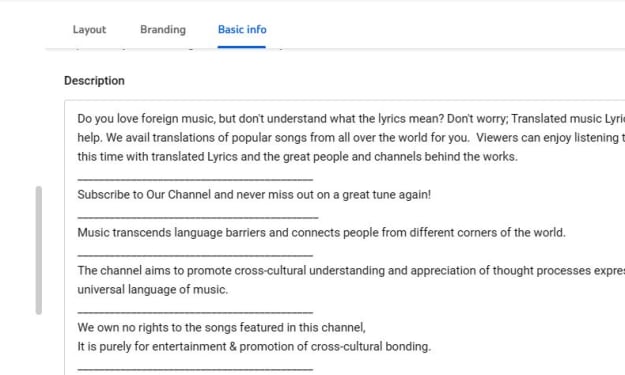How to handle exceptions and errors
During and/or after the automation and configuration process

Handling exceptions and errors during or after the automation and configuration process is crucial for maintaining the stability and reliability of the system. Here are some general guidelines on how to handle such situations:
Exception Handling: Use appropriate exception handling techniques to catch and handle exceptions that may occur during the automation and configuration process. This involves identifying the potential points of failure and implementing try-catch blocks or similar error handling mechanisms around those areas of code.
Logging and Error Reporting: Implement a robust logging mechanism that records relevant information about exceptions and errors. Log messages should include details such as the type of exception, the location where it occurred, and any relevant context. These logs can help in diagnosing and troubleshooting issues. Additionally, consider implementing an error reporting mechanism that notifies the appropriate stakeholders (e.g., system administrators or developers) about critical errors in real-time.
Graceful Error Handling: When an exception or error occurs, it is important to handle it gracefully. This may involve providing informative error messages to users, performing cleanup actions, or attempting to recover from the error if possible. Avoid abrupt termination or leaving the system in an inconsistent state.
Error Codes and Error Handling Strategies: Establish a set of well-defined error codes or error identifiers that can be used to categorize different types of errors. This allows for easier identification and handling of specific error scenarios. Define appropriate error handling strategies for different error codes to ensure consistency and maintainability of the codebase.
Testing and Validation: Prioritize thorough testing and validation of the automation and configuration processes. This includes unit testing, integration testing, and system testing. By identifying and addressing issues during the testing phase, you can minimize the occurrence of errors in the production environment.
Monitoring and Alerting: Implement monitoring and alerting systems to track the performance and health of the automation and configuration processes. Set up alerts to notify relevant stakeholders when certain predefined thresholds or error conditions are met. This proactive approach enables quick identification and resolution of issues before they cause significant disruptions.
Continuous Improvement: Regularly review and analyze the logs, error reports, and user feedback to identify patterns, recurring issues, or areas for improvement. Use this information to refine the automation and configuration processes, update error handling mechanisms, and implement preventive measures.
Graceful Degradation: Plan for scenarios where errors or exceptions occur that may not critically impact the system's functionality. Implement mechanisms for graceful degradation, which allow the system to continue functioning with reduced features or alternative paths when certain errors are encountered. This helps minimize disruptions and ensures the system remains operational.
Error Recovery and Retry Mechanisms: In cases where an error is recoverable, design and implement appropriate error recovery and retry mechanisms. For example, if a network connection error occurs during the configuration process, you can retry the connection a certain number of times before reporting a failure. Consider implementing exponential backoff strategies to avoid overwhelming the system with retries.
Error Analysis and Root Cause Investigation: When errors occur, it is essential to investigate and analyze the root causes to prevent similar issues in the future. Collect relevant data and information about the error, including the circumstances leading up to it, system logs, and any user input or configuration details. Analyze this information to identify underlying issues, software bugs, or configuration problems that need to be addressed.
Rollback and Rollforward Strategies: In cases where errors or exceptions have a significant impact on the system's stability, consider implementing rollback and rollforward strategies. Rollback involves reverting the system to a previous known working state, while rollforward involves applying a previously tested and verified configuration or code version. These strategies provide a way to recover from critical errors and restore the system to a functional state.
Documentation and Knowledge Sharing: Maintain comprehensive documentation of the automation and configuration processes, including potential errors and their resolutions. This documentation serves as a reference for troubleshooting and helps new team members understand common error scenarios and their appropriate handling. Encourage knowledge sharing within the team to foster collective learning and improve the overall understanding of error handling practices.
Security Considerations: Pay attention to security-related errors and exceptions that may occur during the automation and configuration process. Implement appropriate security measures, such as input validation, sanitization, and secure communication protocols, to mitigate potential vulnerabilities and prevent security breaches.
By following these best practices, you can effectively handle exceptions and errors that arise during and after the automation and configuration process, ensuring a more robust and reliable system. Remember that the specific implementation details may vary depending on the programming language, framework, or environment you are working with.
About the Creator
Frank Odhiambo
Frank Odhiambo is a seasoned and passionate writer renowned for his compelling and thought-provoking pieces. Global award winner for "Voice of reason" He has established himself as a prominent voice in the world of authors and writers.
Enjoyed the story? Support the Creator.
Subscribe for free to receive all their stories in your feed. You could also pledge your support or give them a one-off tip, letting them know you appreciate their work.






Comments
There are no comments for this story
Be the first to respond and start the conversation.